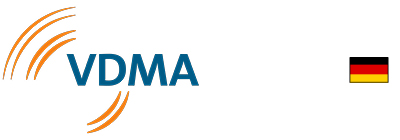Electromobility
Solutions for the multiple challenges of grid integration of electric vehicles.
With the increasing share of electric vehicles (EVs), numerous issues arise for the power sector regarding grid integration:
- Integrating EVs into grids: Hosting capacity of distribution networks and optimal locations for (rapid) charging stations?
- Alternatives to grid expansion: buffer storage and controlled charging?
- System serving and cost-efficient use of EVs with minimum user restrictions: Self-consumption optimization, vehicle to grid (V2G)?
- Bundling of EVs and communication with grid operator?
- Grid connection rules (grid codes): Which rules and intervention options should apply? How to prove the compliance of an EV with effective rules?
Different questions are relevant for different actors and there are different approaches to solve them:
»For grid operators
»For manufacturers
»For regulators
»For EV fleet operators
For grid operators:
Distribution grid operators in particular are the first to be affected by the increasing number of EVs. With many EVs in the low-voltage grid, there is a risk of grid overload if a large proportion of the cars are charging at the same time. The number of electric cars at risk of overloading the grid can be calculated with an analysis of the hosting capacity. Assuming simultaneity factors for EV charging, Energynautics can provide appropriate analyses. For grid simulations, we typically use DIgSILENT PowerFactory and also link our models to GIS data so you can see exactly where which elements are overloaded.
We will be happy to advise you on possible remedial measures such as grid expansion or possibilities to intervene in charging, which will become more important in the future due to §14a of the EnWG (in Germany). Interventions in controllable consumers should be non-discriminatory, safe and with minimal user restriction. To ensure this, the interventions should be as automated as possible by a smart algorithm. In previous projects, Energynautics has already implemented various algorithms for this application. Together with you, we will find the best solution for your network, taking into account both technical and economic aspects!
Other challenges arise when planning new, public charging stations. Very large capacities are required, especially at rapid charging stations (e.g., on highways). It must be kept in mind that electrification is not limited to passenger cars, but that trucks will also increasingly drive electrically in the future. Charging capacities in the megawatt range can be expected for freight traffic. A future-proof network must therefore be capable of providing such charging capacities. We support you in the search for suitable locations, in checking the suitability of a grid connection point and in innovative solutions, such as buffer batteries!
For manufacturers:
The use of the flexibility of EVs is increasingly being discussed in the energy industry. The focus is also on bidirectional charging (vehicle-to-grid, V2G) and the first manufacturers are equipping their vehicles with this functionality. However, local grid connection guidelines must be considered when using bidirectional charging. Although the grid codes of the European countries are harmonized by the RfG (Requirements for Generators), they differ in details and especially in the proof of compliance. In Germany, for example, the same requirements apply to cars with V2G function as to stationary battery storages. This includes, for example, requirements for harmonics, fault ride-through capability (FRT), reactive power, and more. Compliance with the Grid Code is verified by measurements and manufacturer declarations and recorded in a unit certificate. Certificates can only be issued by accredited certification institutes.
We will be happy to advise you on the country-specific requirements for V2G or vehicle charging in general, as well as on the necessary proof of compliance.
For regulators:
For some time now, grid connection rules around the world have been changing to reflect the new reality with more and more variable renewable generators connected in a decentralized manner via converters. In recent years, the topic of grid integration of electromobility has also become increasingly important. Here, a variety of questions arise from different areas:
- Which charging plugs should be used?
- How should grid operators communicate with charging EVs?
- What rules apply to bidirectional charging?
- What functionality is needed to not jeopardize safe and stable grid operation, e.g., response to frequency deviations, FRT capability, requirements for harmonics and unbalances, etc.?
- How will grid code compliance be demonstrated?
- What tariffs, billing models and electricity meters make sense?
We can help you revise your grid code and determine appropriate guidelines for your country.
For EV fleet operators:
Electrification of vehicles does not only concern personalized mobility, but also fleets in particular, e.g. the vehicles of logistics and bus companies. The challenge in fleet electrification is that most vehicles are on the road during the day and only return to the depot or logistics center in the evening and are then charged at the same time. This can easily lead to grid connection point overloads and even grid congestion.
In situations where a truck is only in one place for a short time, e.g. for unloading cargo, but the battery still needs to be charged as fully as possible during this time, the high charging power required is the biggest challenge.
In addition to expensive and lengthy grid expansion, innovative solutions are available, such as buffer batteries, smart controlled charging of EVs or a combination of several solutions. We provide you with neutral and manufacturer-independent advice in order to find the technically and economically optimal solution for your fleet or your business together with you!
Your challenge or project idea is not included? Contact us and we will find an individual solution for your questions!
This may be of Interest for you:
A Selection of our References.
Filter references

Connection Point Assessment for New HVDC Connector
Energynautics conducted an analysis to assess the technical viability of a new subsea HVDC connection between Spain and Italy.
Read more
Load and Generation Projection for a German Utility
Energynautics compiled geographically detailed load and generation projections for the distribution grid of EWR Netz GmbH with a focus on the future growth of distributed generation and end-use electrification up to 2040.
Read more
Low-cost, Grid-friendly Charging for Bangladesh
A smart charger for three-wheeler charging stations in Bangladesh was developed to mitigate the grid load during peak hours.
Read more
EV Integration Handbook
Energynautics together with RE-xpertise developed a handbook on best practices for the integration of electric vehicles into the distribution grid.
Read more
Power System Planning for IRRP Development in CARICOM States
On behalf of GIZ, Energynautics supported the Caribbean Centre for Renewable Energy and Energy Efficiency (CCREEE) with generation and grid expansion planning in Guyana and Trinidad and Tobago.
Read more
NGESO Reactive Power Market Design
Development of a market-based solution for reactive power management in the GB transmission system, ensuring cost efficient provision to maintain system voltage security in a zero-carbon system.
Read more
Optimizing the Grid Operation by Using the FNN Control Box
The objective of the project is to develop a control box, the Smecon-Box, which combines local intelligence and central controllability for electric vehicles, photovoltaic systems, heat pumps and Co in order optimize the grid operation.
Read more
Consultancy Services for the North Sea Wind Power Hub Programme
This study investigates the potential of offshore wind energy hubs in the North Sea in contrast to radially connected wind farms with the aim of optimizing the integration of offshore wind.
Read more
Smart Inverters for Distributed Generation
Recommendations to incorporate smart inverters for increasing the PV hosting capacity in distribution grids and grid reliability.
Read more
Ancillary Service Review for the Mexican Power System
Energynautics engineers supported one commissioner’s office of the Mexican regulator in their ongoing review of ancillary services needed for further increases in renewable energy contribution.
Read more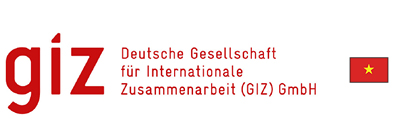
Risk Management Guidelines for Solar PV Projects in Vietnam
The objective of this assignment was to develop handbooks on risk management – technical guidelines for ground-mounted and floating solar PV projects from the development to the dismantlement phase.
Read more
Revision of Grid Codes for the Dominican Power System
Commissioned by GIZ, Energynautics conducted a revision of the transmission grid codes in the Dominican Republic to ensure their suitability for large scale VRE integration.
Read more
Research Study on Sustainable Energy Transition and Energy Infrastructure Development Opportunities
The aim of the study was to provide input for the implementation of Resolution No 55 “Vietnam’s National Energy Development Strategy to 2030, vision to 2045” of Vietnamese Party’s Politburo and further orientations for sustainable energy transition in Vietnam.
Read more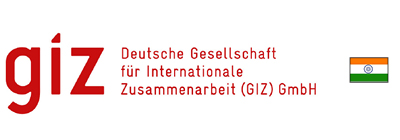
Role of Distribution Companies in Using Grid Support Services from Solar Rooftop PV Systems and Storage
Energynautics was commissioned by GIZ to analyse the services which can be provided by solar rooftop PV and battery storage to support the distribution grid in India.
Read more
Distribution Grid Study in the Dominican Republic
Energynautics analyzed the maximum PV penetration levels in Dominican distribution grids.
Read more
EU Network Codes for Estonia
Energynautics conducted a study on various aspects of grid codes, gathering international experience and accepted good practices for Estonian consortium.
Read more
ETS Plus Emission Trading: Power Market Simulations for IFW
Energynautics was subcontracted by the IFW Kiel Institute for the World Economy within a larger project to evaluate the impact of rising emission prices on the power sector.
Read more
Review of the Mongolian Grid Code
Energynautics was commissioned by the World Bank in 2018 to assist the Mongolian system operator to update their grid code.
Read more
Transmission Grid Study Czech Republic
Energynautics was commissioned by a consortium of NGOs to conduct a high level transmission system study to investigate the impact of a large scale coal exit in the Czech Republic by 2030.
Read more
REEP 1000 Islands: RE Integration in Indonesia
Commissioned by GIZ, Energynautics, Cadmus and ABO Wind provide technical support to Indonesian power system stakeholders until 2020. The project includes multiple island grid studies, development of tender documents, capacity building workshops and a revision of the distribution code.
Read more
Vietnam Technology Assessment
Back in 2012, Vietnam published a smart grid roadmap which includes different phases for defining the smart grid implementation in Vietnam. In order to support the development of smart grids, Energynautics assessed the current smart grid progress and developed recommendations.
Read more
PV Port & Store
India aims to install 40 GW solar PV capacity on rooftops by 2022. To support this target, Energynautics developed a standardized plug-and-play PV plus battery system which ensures uninterrupted power supply, maximization of self-consumption and peak shaving of high load peaks in the evening.
Read more
Regional Capacity Development in ASEAN
In order to support the renewable energy development in the ASEAN region, Energynautics held three capacity building workshops to participants from utility networks, governments and other stakeholders in the public and private sector.
Read more
Rooftop PV Policy in Vietnam
To support the Electricity Regulatory Authority of Vietnam, Energynautics developed technical requirements for rooftop solar PV installations in Vietnam, taking existing regulations, international best practices, and local development targets into account.
Read more
Power Quality Measurement Campaign at Al Zaatari PV Power Plant
A 12,9 MWp PV power plant was built to ensure the electricity supply for the Al Zaatari refugee camp in Jordan. In order to determine the influence of the PV plant on power quality, Energynautics conducted a power quality measurement campaign at several points in the local grid.
Read more
Smooth PV
Smart Modelling of Optimal Integration of High Penetration of PV (Smooth PV) is a project which has the objective to develop advanced modeling and simulation tools using the software tool DIgSILENT/PowerFactory in order to evaluate the impact of a large-scale penetration of PV on the optimum economical design/operation of the distribution and transmission network.
Read more
REEP 1000 Islands
GIZ has commissioned Energynautics to conduct pilot studies for renewable integration on two Indonesian islands. The Indonesian government has set a national target of 23% electricity from renewable sources by 2025. Hybrid systems on the more than 17,000 small Indonesian islands can contribute significantly to reaching this goal.
Read more
3DMicroGrid
Microgrids are a promising solution to facilitate the integration of renewable energies. 3DMicroGrid includes the design, development and demonstration (3D) of a future-proof active smart microgrid system to integrate and optimize multiple energy sources and loads.
Read more
DESIGNETZ
New innovative approaches are needed for a cost-efficient integration of renewables into the distribution grid. Energynautics analyses their effectiveness and refines their use for the BDEW traffic light concept.
Read more
How-To Guide for Variable Renewable Energy Integration
How can variable renewable energy be integrated in the Philippine power system? Energynautics shows how with a step-by-step guide developed for the World Bank and the Philippine system operator!
Read more
Innovative Grid Toolbox
Grid expansion is an essential flexibility option for integrating ever-greater shares of variable renewable energy: We show which innovative “tools” there are in order to optimally use the transmission grid.
Read more
European Grid Study 2030/2050
100% renewables by 2050? Commissioned by Greenpeace, the study investigated how the European grid has to be cost-optimized in order to realize the Energy [R]evolution Scenarios.
Read more
Grid Absorption Study Seychelles
Renewable energy in small island systems brings economic benefits as well as technical challenges: We reveal how wind and solar can be optimally integrated into the Seychelles power system.
Read more
Barbados Grid Code Review
Energy policy target for 2029: 29% renewables. With this in mind, Energynautics reviewed the Barbados Grid Code and developed new Planning and Operation Codes.
Read more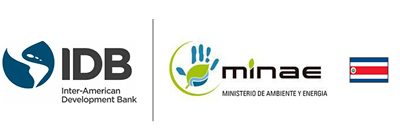
Renewables Grid Integration Study Costa Rica
100% renewables today: Made possible by excellent wind, solar and hydro resources. We show how the power system should be organized for reliable operation.
Read more
IRENA Grid Code Study
Which aspects have to be considered when developing grid codes for integrating high shares of renewables while maintaining a reliable and stable power supply? We provide answers!
Read more
Snoopi – Smart Network Control with PV Infeed
PV battery systems can do more than just optimize self-consumption: Our controller stabilizes the voltage and thus paves the way for a higher PV penetration.
Read more
Cell Controller Project
Development and test of a universal high-end Smart-Grid-Controller. The highlight: Pure autonomous island operation of the distribution system based solely on distributed energy resources.
Read more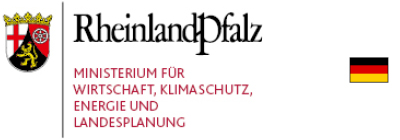
Distribution System Study Rhineland-Palatinate
100% renewables by 2030, that’s what the state government is aiming for. We show what this aim will mean for the distribution system of RLP and how smart grids can contribute.
Read more


